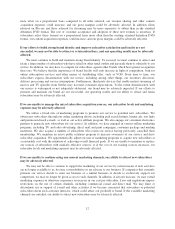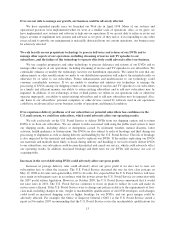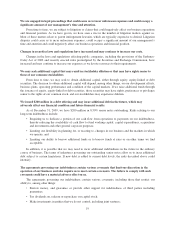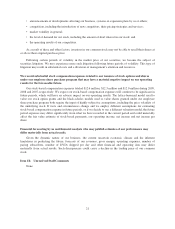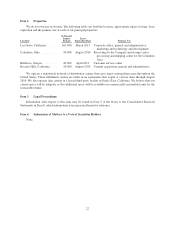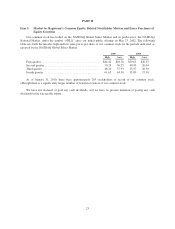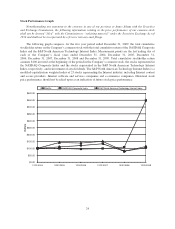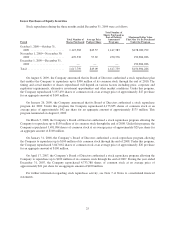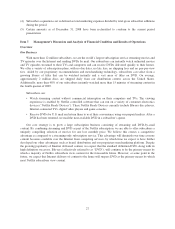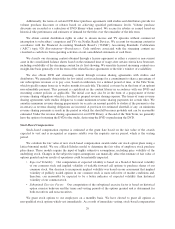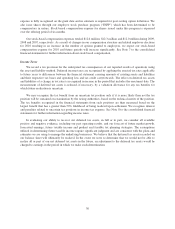NetFlix 2009 Annual Report Download - page 26
Download and view the complete annual report
Please find page 26 of the 2009 NetFlix annual report below. You can navigate through the pages in the report by either clicking on the pages listed below, or by using the keyword search tool below to find specific information within the annual report.• Enter into certain asset sale transactions;
• Enter into secured financing arrangements;
• Enter into sale and leaseback transactions; and
• Enter into unrelated businesses.
These covenants may limit our ability to effectively operate our businesses. Any failure to comply with the
restrictions of any agreement governing our other indebtedness may result in an event of default under those
agreements.
Risks Related to Our Stock Ownership
Our officers and directors and their affiliates will exercise significant control over Netflix.
As of December 31, 2009, our executive officers and directors, their immediate family members and
affiliated venture capital funds beneficially owned, in the aggregate, approximately 23% of our outstanding
common stock and stock options that are exercisable within 60 days. In particular, Jay Hoag, one of our directors,
beneficially owned approximately 14% and Reed Hastings, our Chief Executive Officer, President and Chairman
of the Board, beneficially owned approximately 6%. These stockholders may have individual interests that are
different from other stockholders and will be able to exercise significant influence over all matters requiring
stockholder approval, including the election of directors and approval of significant corporate transactions, which
could delay or prevent someone from acquiring or merging with us.
Provisions in our charter documents and under Delaware law could discourage a takeover that
stockholders may consider favorable.
Our charter documents may discourage, delay or prevent a merger or acquisition that a stockholder may
consider favorable because they:
• authorize our board of directors, without stockholder approval, to issue up to 10,000,000 shares of
undesignated preferred stock;
• provide for a classified board of directors;
• prohibit our stockholders from acting by written consent;
• establish advance notice requirements for proposing matters to be approved by stockholders at
stockholder meetings; and
• prohibit stockholders from calling a special meeting of stockholders.
In addition, a merger or acquisition may trigger retention payments to certain executive employees under the
terms of our Executive Severance and Retention Incentive Plan, thereby increasing the cost of such a transaction.
As a Delaware corporation, we are also subject to certain Delaware anti-takeover provisions. Under Delaware
law, a corporation may not engage in a business combination with any holder of 15% or more of its capital stock
unless the holder has held the stock for three years or, among other things, the board of directors has approved
the transaction. Our board of directors could rely on Delaware law to prevent or delay an acquisition of us.
Our stock price is volatile.
The price at which our common stock has traded since our May 2002 initial public offering has fluctuated
significantly. The price may continue to be volatile due to a number of factors including the following, some of
which are beyond our control:
• variations in our operating results;
• variations between our actual operating results and the expectations of securities analysts, investors and
the financial community;
20




